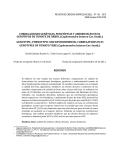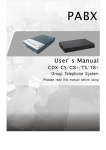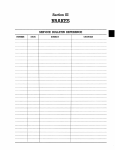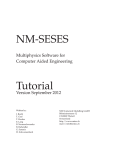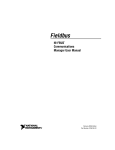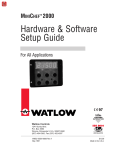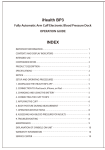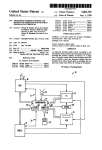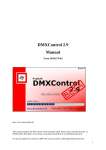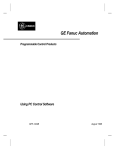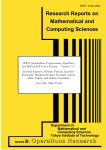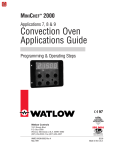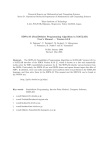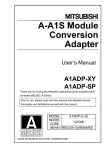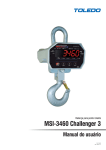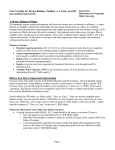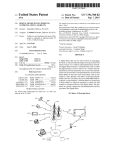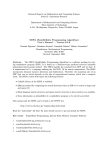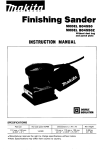Download STORE J20
Transcript
USOO5693902A
United States Patent [191
[11]
Patent Number:
5,693,902
Hu?'ord et a1.
[45]
Date of Patent:
Dec. 2, 1997
Arpeggio Self-Editing Music System, Airworks Corpora
[54] AUDIO BLOCK SEQUENCE COMPILER
FOR GENERATING PRESCRIBED
DURATION AUDIO SEQUENCES
tion.
Tunebuilder Custom Airworks Corporation.
[75] Inventors: Geo?'rey Calvin Hu?'ord; Christopher
P. Hulford; Kevin C. Klingler, all of
Chatsworth, Calif.
Primary Examiner-William M. Shoop, Jr.
Assistant Examiner-—Mar1on T. Fletcher
[73] Assignee: Sonic Desktop Software, Chatsworth,
'
Attorney, Agent, or Firm—Freilich, Hornbaker & Rosen
Calif.
[57]
[21] Appl. No.: 532,527
[22] Filed:
Sep. 22, 1995
ABSTRACT
An audio block sequence compiler for selecting a plurality
of audio blocks to generate a sequence having a duration
corresponding to user-prescribed criteria. In a preferred
[51]
[52]
Int. cl.6 ..................................................... .. G10H 7/00
US. Cl. ............................... .. 84/650; 84/634; 84/609;
84/610
segment from a prede?ned audio library and prescribes the
[58]
Field of Search ............................ .. 84/609, 610, 634,
duration of an audio sequence. Prior to depositing each
embodiment, a user chooses an audio, e.g., a musical,
84/649, 650, 615, 653
[56]
5,300,725
References Cited
U.S. PATENT DOCUMENTS
duration, (2) suitability for being used as a beginning or
ending of an audio sequence, and (3) musical compatibility
with each audio block. Using this characteristic table and the
user-prescribed criteria, i.e., duration, the audio block
sequence compiler generates a plurality of audio sequences
satisfying the user-prescribed criteria which can be
reviewed, e.g., played, and/or saved for future use.
ing encoding table with characteristics including (1)
4/1994 Manabe ................................... .. 84/609
5,455,378 10/1995 Paulson et al.
5,521,323
musical segment in the library, the musical selection is
divided into audio blocks that are identi?ed in a correspond
84/610
5/1996 Paulsonetal.
.. 84/610
OTHER PUBLICATIONS
'Iune Builder 1.1 For MAC User Manual, Airworks Corpo
ration.
Tune Builder Self-Editing Music System, Airworks Corpo
21 Claims, 6 Drawing Sheets
ration.
243
:4
[1O
/
ENCODING
TABLE
/'23
l
22
1
1
_,/2E5
\
O
.
_
.
'
STORE
A DIO
POTENT
.
BL CK
;
SEQUENCE
COMPILER
/
‘
ND
SPEAKER
, BLOCK [AL PLAYSEZLRD
G
SEQUENCE
LIST
DISPLAY
\"'6
r17
N
J20
F19
PROCESSOR
N
j
13
2'
M
'S|
(T;
R
PC
‘ USER INTERFACE
J36 12>
1. SELECTION FROM Li R
2. DURAT|0N~38
Y
B AR [18
KEYBOARD] MOUSE
US. Patent
Dec. 2, 1997
Sheet 2 0f 6
5,693,902
m
GE
mm»
Omi m )
P0vZM53Ow4m
mm
z.02w5ihm3v.w4m
U.S. Patent
Dec. 2, 1991
Sheet 3 of 6
5,693,902
Blgck___Diagrem
User Specifies File)
[User Speci?es Length)
Locate a suitable
block coded to Begin
Using Audio Block Sequence
Compiler, construct a list
of blocks which conform to
the user specifications
F
Continue until length is
correct and lastblock
i
coded to End
k
J
f
1
Hetum the version to the
user to play or save
k
J
FIG. 3A
US. Patent
Dec. 2, 1997
Sheet 4 of 6
5,693,902
Select Next 1s!
Block
Remove block and
search ior anothe
Add block to List
Get Next Block
Tried all
Blocks?
Is list long
enough?
is last block
an End?
Y
Save In Block
Sequence List
H6. 38
N
Remove block
lrom Iis!
US. Patent
B"0a34u9mn3.“s.i0n5ue3?»“wv.ouan
Dec. 2, 1997
0mon:?5.3canx2uon.»0c? o
5au$ou.“an3.a.“H“cxn503ono6n0u:.5" an“Hm5ou.6ih?no“?:unmauo aon1?uun:c3S.wanonidan“m»?n.oce
3"unc.naous3?nxoce.:“u usonno$?np.d3:os5u.“’
3523I953A.v3
3nvmot:.un‘a3“wuoa
8a
em an
nvd0xuE0593wHom|0.u?n:»w0u a.“oamJ3..nm.“5?w0onvanudm.:?2ouw
5h.$323“3a.253x.35
a.“3..5..and»an.“Hon
ca
Sheet 6 0f 6
mm on mm
HU(MQZNDHOBNM
i
5,693,902
G3n209Ee5.»3w:?50a.“uuG#onoub0a.om?u
mx52?uoc.3dmnawu
_au0o2.c:a9“u5o»:
@950.“
c
9523..38@60m523 mw1?:aus.o2n3ui0wa“5n
an2udE3;.mwuoacn“ms?nuo»co
.0
on on on nu on an mm
mm
sumac." npmcud sumac." 532" 596." 596." 532. sumac." 5on3" 53 53 sumnw ?n ed sum on 53
hall-ch
hhhh
u
u m
a: m w: . in
DOG
QQQO
UUU
UUUU
mam
mmmm
(
4 4 4
4 4
4
it
5,693,902
1
2
AUDIO BLOCK SEQUENCE COMPILER
FOR GENERATING PRESCRIBED
DURATION AUDIO SEQUENCES
In a still further aspect of a preferred embodiment, each
block can be identi?ed in the encoding table as having a hit
point that de?nes the location (when present) of an intensity
burst. When prescribed by the user, the audio block
COPYRIGHT NOTICE
This patent document contains material which is subject
to copyright protection. The copyright owner has no objec
tion to the facsimile reproduction by anyone of the patent
document or the patent disclosure, as it appears in the Patent
and Trademark O?ice patent ?le or records, but otherwise
sequence compiler can use the hit point parameter to place
an intensity burst at a user-prescribed location in the gen
erated audio sequence.
10
reserves all copyright rights whatsoever.
BACKGROUND OF THE INVENTION
The present invention relates generally to hardware!
software systems of the type used to generate audio
sequences and in particular for generating audio sequences
of prescribed durations that are of particular use for creating
BRIEF DESCRIPTION OF THE DRAWINGS
15
user-prescribed durations;
2.0
repetitively edited before an aesthetically satisfactory
sequence is achieved. The audio sequence must then be
edited to match the duration of the edited video sequence.
With an available orchestra, this process can be repeated as
FIG. 1 comprises a functional block diagram of an audio
block sequence compiler system in accordance with the
present invention for generating audio sequences having
soundtracks in multimedia systems, e. g., in an audio/video
environment.
In an exemplary audio/video environment, a visual
sequence, e.g., a movie/video clip, is combined with an
audio background. However, visual sequences are often
Other features and advantages of the present invention
should become apparent from the following description of
the presently-preferred embodiments, taken in conjunction
with the accompanying drawings, which illustrate, by way
of example, the principles of the present invention.
25
FIG. 2 is a simpli?ed diagram of an encoding table
showing the parameters associated with each audio block;
FIG. 3A is a simpli?ed ?ow chart of the operation of the
system of FIG. 1;
FIG. 3B is a simpli?ed ?ow chart depicting the process
implemented by the audio block sequence compiler;
FIG. 4 is an exemplary encoding table for a ?fty second
source audio segment; and
often as necessary but it is very expensive. In a more
restricted environment, e.g., a multimedia video game, this
FIG. 5 shows the iterations performed by the audio block
sequence compiler according to the ?ow chart of FIG. 3B on
the data of the encoding table of FIG. 4.
procedure is often too costly and cumbersome.
SUMMARY OF THE INVENTION
The present invention is directed toward an audio block
DESCRIPTION OF THE PREFERRED
sequence compiler for selecting a plurality of suitable,
EMBODHVIENTS
compatible audio blocks to generate an audio sequence
With reference now to the drawings, and particularly to
FIG. 1, there is shown a block diagram of a preferred
embodiment of an audio sequence generator 10 of ?ue
present invention. In a preferred embodiment, the audio
having a duration corresponding to user-prescribed criteria.
35
In a preferred embodiment, a user using a keyboard]
mouse interface chooses an audio, e.g., a musical, segment
from a prede?ned audio library and prescribes the duration
of an audio sequence. Prior to depositing each musical
segment in the library, the musical selection is divided into
audio blocks that are identi?ed in a corresponding encoding
table with characteristics including (1) duration, (2) suit
ability for being used as a beginning or ending of an audio
sequence, and (3) musical compatibility with each audio
block. Using this characteristic table and user-prescribed
criteria, i.e., duration, the audio block sequence compiler,
45
sequence generator 10 is comprised of a computer-executed
software program, generally initially present on a ?oppy
disk, and ?nally residing on the hard disk of a personal
computer (PC) 12, e.g., a Macintosh or IBM compatible PC,
controlled by a processor 13. As such the following
discussion, relates to this preferred PC environment.
However, diiferent computer platforms or hardware only
implementations are also considered within the scope of the
presently preferred invention.
preferably a software program executed by a computer,
generates a plurality of audio sequences satisfying the
The audio sequence generator 10 is primarily comprised
user-prescribed criteria which can be reviewed, e.g., played
or displayed, and/or saved for future use.
In a further aspect of a preferred embodiment, the char
acteristic table additionally contains a mood parameter that
is user prescribed and used by the audio block sequence
compiler to generate an audio sequence of a selected mood. 55
In a still further aspect of a preferred embodiment, the
encoding table additionally contains a parameter that iden
ti?es blocks that are fadeable. When a fadeable block is
of 1) an audio library 14 and 2) an audio block sequence
compiler 16. In operation, a user via a user interface 17, e.g.,
a keyboard/mouse 18, chooses a source segment from the
audio library 14 and prescribes a duration. This information
is communicated to the audio block sequence compiler 16
which, under control of a software program executed by the
processor 13 in the PC 12, fetches blocks of audio data from
the audio library 14 and according to compilation criteria
described further below generates a list of potential audio
sequences that are preferably temporarily stored within a
selected as an end block, the audio block sequence compiler
potential block sequence list depository 19. At that point, the
can truncate the fadeable end block to generate an audio
user can select to play via a sound card/speaker 20 or review
sequence of the prescribed length which might otherwise not
via a monitor 21 the potential block sequences and/or store
selected sequences for future use, e.g., on a hard disk 22.
be achievable.
In a further aspect of a preferred embodiment, the encod
ing table additionally contains an intensity parameter that,
when selected by the operator, is used by the audio block
sequence compiler to generate an audio sequence that most
closely matches a user-prescribed intensity curve.
Alternatively, the audio block sequence compiler 16 can
compile a single block sequence until prompted by the
65
operator to generate a next audio sequence.
The audio library 14 preferably contains library entries 23
pertaining to a plurality of source audio segments. Each
5,693,902
3
4
library entry 23 is comprised of l) a source audio segment
24 and 2) an encoding table 26 which describes the parti
tioning of the source audio segment 24 into blocks and the
characteristics of each block. Although, the source audio
segment 24 is shown as being located within the library 14,
one of ordinary skill in the art will recognize that the source
audio segment 24 can alternatively be physically located
outside of the library, e.g., on a CD, and referenced, e.g., by
pointers. by the encoding table 26. FIG. 2 shows an exem
plary structure for the encoding table 26. Each entry 23 in
the encoding table 26 contains a de?nition/pointer 28 which
includes identifying information for the library entry, e.g., a
title and the physical location of the source audio segment
24, e.g., a CD ?le. Each encoding table entry 23 is further
divided into a plurality of entries that de?ne blocks, i.e.,
audio blocks, and associated characteristics for the audio
from the source audio segment 24. In a simpli?ed example,
In the example shown in FIG. 5, the user has selected a
duration of thirty-?ve seconds for this source audio segment
24. Accordingly, FIG. 5 shows the iterations performed by
the audio block sequence compiler on the encoding table of
FIG. 4 according to the ?ow chart of FIG. 3B. FIG. 5 shows
that the original audio sequence has now been rearranged
into three potential sequences that each have the prescribed
duration, begin with a beginning block and end with an
ending block.
In an exemplary embodiment, the audio sequence gen
erator 10 allows users to quickly and easily create movie or
record quality music soundtracks for any application or
document that can import sound. The audio sequence gen
erator 10 is able to accomplish this by using the encoded
15
style and sub-style from a list, then speci?es the length (in
minutes, seconds and tenths). A piece of music is selected
a source audio segment 24 is divided into ?ve blocks: A, B,
from their library that meets the users needs and a custom
C, D, E, F where the sequence ABCDEF corresponds to the
source audio segment 24. Although, other combinations of
blocks, e.g., FEDCBA, also create audio sequences, not all
sequences of blocks will create aesthetically reasonable
audio sequences. Thus, it has been determined that infor
mation must be derived to determine the musical compat
ibility according to aesthetic criteria between each block,
version of that music is created that is exactly (within
20
user-prescribed criteria) the speci?ed length. If the user
doesn’t like the selected music, they can hear a different
version of the same music or a different piece music-all of
the versions presented will ?t the speci?cations of the user.
25
e.g., A, B, and each potential succeeding block, e.g., while
By using music and its corresponding encoding table 26,
and input from the user, the compiler 16 can customize the
following aspects of the music:
block C may reasonably follow block B, it may not be
aesthetically reasonable for it to follow block A.
Additionally, while some blocks, e.g., A, are suitable accord
ing to aesthetic criteria to reasonably start a musical
sequence, other blocks can not. Similarly, only certain
blocks, e.g., F, are suitable according to aesthetic criteria to
reasonably end a musical sequence. Lastly, not all source
audio segments 24 can reasonably be divided into ?xed
length blocks. In fact, using reasonable aesthetic criteria,
blocks will generally be dilferently sized. Consequently,
music and input from the user. The user selects a musical
The length of the music can be customized in tenths of
second increments from seconds to hours.
Different versions of the same piece of music (sometimes
hundreds of thousands of options) can be generated.
In an alternative embodiment, the compiler 16 can cus
tomize the intensity of the music. The user can de?ne
a graph of the intensity which they request on a
35
timeline. This will allow them to have the program
make a piece of music that begins softly (perhaps while
by combining different combinations of these dilferently
an announcer speaks) and builds to a climax (perhaps
when the narration has ended). In this embodiment, an
sized blocks. However, as previously described, the avail
able combinations are limited by the compatibility between
potentially adjacent blocks as well as their suitability to
intensity parameter is added to the encoding table 26
for each block and the audio block sequence compiler
16 selects blocks that most closely correspond to the
audio sequences of many ditferent durations can be achieved
prescribed intensity graph.
begin or end an audio sequence. Corresponding to these
criteria, data in the encoding table 26 for each audio block
contains parameters pertaining to a 1) a duration 30, 2) a
type (beginning/end) 32, and 3) a list of compatible blocks
34, i.e., blocks that can aesthetically follow the current
In an alternative embodiment, the user can specify and
modify the mood of the music without changing any
45
other characteristics. In this embodiment, a mood
parameter is added to encoding table 14. Additionally,
block. Additionally, information (not shown) identifying the
multiple renditions of the source audio segment 24 are
physical location of each audio block in the source audio
segment 24 is retained in the encoding table 26. While data
prerecorded corresponding to different moods. The
audio block sequence compiler 16 will then select
renditions that correspond to the prescribed mood
in the encoding table 26 can be manually generated, auto
mated procedures are also possible.
parameter.
FIG. 3B shows a simpli?ed ?ow chart of the iterative
In another alternative embodiment, a user can specify 20
seconds of background music followed by 12 seconds
process implemented by the audio block sequence compiler
16 after being provided the user-prescribed data (as shown
in FIG. 3A). As previously described, after the user has
55
smooth, musical, transition between them.
determined a selection 36 from the library 14 and a duration
38, the audio block sequence compiler 16 operates on the
data in the encoding table 26 according to the flow chart of
FIG. 3B. Accordingly, a list of potential audio sequences is
compiled and stored in the potential block sequence list 19.
FIG. 4 shows an exemplary encoding table for a ?fty
second source audio segment 24. In this example, the source
audio segment is partitioned into ten blocks, each being ?ve
seconds long. (However, while ?xed length blocks exist in
this example, this is often not the case). In this example,
Blocks A and C have been marked as potential beginnings
and blocks E and I have been marked as potential endings.
of introductory music. The program will be able to
locate two different pieces of music and make a
In an additional alternative embodiment, blocks can be
identi?ed as fadeable blocks in the encoding table 26.
When a block is fadeable, its duration can be truncated
to become a satisfactory end block, even if its duration
would normally be too long. The audio block sequence
compiler 16 will then truncate the fadeable block to
achieve the user-prescribed duration. Additionally, the
65
intensity of the end of the fadeable block will fade at a
prescribed rate to reduce the effects of the truncation.
In still another embodiment, each block can be identi?ed
in the encoding table 26 as having a hit point that
5,693,902
6
5
de?nes the location (when present) of an intensity
burst. When prescribed by the user, the audio block
-continued
USAGEFIAGS
sequence compiler 16 can use the hit point parameter to
place an intensity burst at a user-prescribed location in
BEGININGJLOCK
Set
bit if the block is a good choice
(sounds musically correct) to begin a
selection
(1L<60) // 0140000000
the generated audio sequence.
Appendix A is a software listing that describes an exem
plary embodiment of the described invention. The following
ENDING_BLOCK
de?nes the data structure for each block of the encoding
Set this bit if the block is a good choice
to end a selection
(n.<<a1) // 0x80000000
table in this exemplary embodiment:
1O
?leInfo
blockStart
While some of the above functions can be applied to
a pointer to which sound ?le this block is associated with
the sample number within the sound ?le at which this block
existing music (through an encoding process) and some are
dependent on a custom music library in which music is
begins
composed and performed in a speci?c format.
blockLength the number of samples that this block contains. The end
sample number is derived by adding blockStart and block
Length
blockName
the name to display on this block (no longer than 15
struct BlockStruct {
SounclFileInfoPtr
characters
blockDesc
the long text description of this block (up to 63 characters)
compatibility an array of bits specifying this block’s compatibility with
all other blocks in this ?le (described below)
usageFlags
bit ?ags indicating properties of this block (described
nextBlock
quickEnd
the block number of the best block to following this block
the block number of the best next block to end the music
below)
sub-blocks into grouped blocks for display
blockPriority a priority number of this block assigned for use in display
ing blocks at different detail levels
blockType
a set of bits specifying if this block should be displayed, if
the block is in-use, and other status ?ags.
25
USELBLOCILTYPE, INVISIBLEJLOCILTYPE,
a True/False ?ag indicating if the block is currently selected
each block is assigned an intensity index in relation to the
hitPoint
more intense the audio in the block is in relation to the
other blocks.
the sample number, if any, of a musical “I-Iit" within the
35
block. (0 for no signi?cant hit)
a number grouping this blocks mood with other blocks
mood. All blocks with the same moodlndex will have the
same mood.
next
a pointer to the next block
40
Compatibility
Each block has an array of unsigned longs which are used
as an array of bits. Each bit corresponds to a block from the
sound?le. Bit 0 corresponds to block 0, etc. Bit 15 should be
set if the block is compatible with block 15. Compatible
blocks are blocks which sound musically correct when they
are played one after the other. For example, “Block A”
should be ?agged as compatible with “Block B” when it
sound musically correct to listen to “Block A” followed by
“Block B”. If “Block B” was the 24th block from the
sound?le, then bit 24 of “Block A”s compatibility array
should be set.
StrlS
Str63
blockNanre;
blockDesc‘,
compatibility[COlVlPAT_SlZE];
usageFlags;
short
nextBlock;
short
unsigned char
lmsigned char
quickEnd;
blockSection;
blockPriority;
BlockTypes
blocl?ype;
Boolean
selected;
BlockStructPtr
next;
I-llNTING/WARNING
Using the encoded information in the blocks, the user is
other blocks in the tile. The higher the intensity number, the
moodIndex
blockStar't;/l sample number
blockLengthd/ number of samples
l;
AVAJLABLEJLOCIL'I‘YPE
selected
intensity
imsigned long
unsigned long
rmsigned long
lmsigned long
quickly
blockSection a section number of this block assigned for use in grouping
?leInfo; // pointer to ?le struct for this
block
45
50
assisted by visually displaying infonnation about the blocks.
Block attributes including beginnings, endings and compat
ibility are all displayed.
Beginning—displayed by a stair-step pattern on the left
edge of the block
Ending—displayed by a stair-step pattern on the right
edge of the block
Compatibility—the rightmost end cap of a selection in the
sequence window is colored and all of the compatible
blocks in the block window will have their left end caps
colored.
Warning—when two non-compatible blocks are next to
each other, we display a red edge at their junction.
THE ENCODING PROCESS
The process of encoding of music and sound is both
musical and technical. The encoding is used to provide as
much information as possible about each piece of music or
sound so that the program can make informed, musical
decisions, when it manipulates the music according to
requests from users. The encoding process includes the
following:
1. Block Start and End: The beginning and ending of each
USAGEFLAGS
DEAD_END__FI..AG
Set if this block will lead you directly
toward an ending. Set this bit if this
block is a bad choice to build a long cue
(1L<<0)
Set this bit if the next block cbesn’t
need a crossfade to make a good sound
ing transition
FADFABLE_BLOCK
Set this bit to signal that this block can
be effectively faded (in volume) to any
length.
discrete music section (block) is determined. This nec
essarily determines the length of each block. listen to
the piece of music and divide it into segments based on
musical phrases and musical uses called blocks. On
average there are ?fteen blocks per minute of music.
2. Block Name: Code each block with a name and
description.
3. Beginning Blocks: For each block a determination is
made as to whether it would make a good way to start
a musical section or phrase.
4. Ending Blocks: Same concept as that described for
Beginning Blocks.
5,693,902
7
8
5. Block Compatibility: Each block is tested for its
speci?c compatibility to each and every other block
which comprise the source audio segment.
contains entries to partition each of said prede?ned
audio segments into blocks;
said table entries including data corresponding to the
duration of each said block, the suitability for each said
6. Intensity: Code each block’s musical intensity relative
block to begin or end an audio sequence, and the
to other blocks.
7. Fadeable Block: Each block has a determination made
as to whether it sounds musically viable to fade or not.
Although the present invention has been described in
detail with reference only to the presently-preferred
embodiments, those of ordinary skill in the art will appre
compatibility of each said block to sequentially follow
each other said block;
a user input device for permitting a user to prescribe an
audio sequence duration;
10
a processor for iteratively compiling a list of one or more
15
audio sequences each comprised of a plurality of blocks
selected according to said user-prescribed audio
sequence duration such that each said audio sequence
conforms with said table entries;
a monitor for displaying said list;
ciate that various modi?cations can be made Without depart
ing from the invention. Accordingly, the invention is de?ned
by the following claims.
We claim:
1. A system for generating an audio sequence having a
an audio apparatus for playing a selected audio sequence
from said list.
prescribed duration, comprising:
a table referencing one or more prede?ned audio seg
9. The system of claim 8, additionally comprising means
ments wherein said table contains entries to partition
to store at least one said audio sequence from said list.
each of said prede?ned audio segments into blocks;
said table entries including data corresponding to the
duration of each said block, the suitability for each said
10. The system of claim 8, additionally comprising means
to play a selected audio sequence from said list using said
audio apparatus.
11. The system of claim 8, wherein said table additionally
block to begin or end an audio sequence, and the
compatibility of each said block to sequentially follow
each other said block;
‘ comprises data corresponding to a mood parameter for each
a user interface for permitting a user to prescribe an audio
said block and said user interface additionally prescribes a
mood parameter and said compiling means can select blocks
sequence duration;
an audio block sequence compiler for iteratively compil
according to said user-prescribed mood parameter.
12. The system of claim 8, wherein said table additionally
25
comprises data corresponding to a fadeable parameter for
ing a list of one or more audio sequences each com
prised of a plurality of blocks selected according to said
user-prescribed audio sequence duration such that each
said audio sequence conforms with said table entries;
and
30 each said block and said compiling means can select a
fadeable block as an ending block and wherein said fadeable
blocks can be truncated to achieve audio sequences of said
user-prescribed audio sequence duration.
13. The system of claim 8, wherein said table additionally
means for displaying said list.
_ 2. The system of claim 1, additionally comprising means 35 comprises data corresponding to an intensity parameter for
each said block and said user interface additionally pre
to store at least one said audio sequence from said list.
scribes an intensity curve and said compiling means selects
3. The system of claim 1, additionally comprising means
blocks according to said user-prescribed intensity curve.
to play a selected audio sequence from said list.
4. The system of claim 1, wherein said table additionally
comprises data corresponding to a mood parameter for each
said block and said user interface additionally prescribes a
mood parameter and said audio block sequence compiler
selects blocks according to said user-prescribed mood
14. The system of claim 8, wherein said table additionally
comprises data corresponding to a hit point parameter for
each said block for specifying when an intensity burst is
present within said block and said user interface additionally
prescribes an intensity burst location and said compiling
parameter.
means selects the sequence of said blocks according to said
user-prescribed intensity burst location.
5. The system of claim 1, wherein said table additionally
comprises data corresponding to a fadeable parameter for
15. The system of claim 8 wherein said user input device
additionally permits a user to prescribe an audio segment
each said block and said audio block sequence compiler can
select a fadeable block as an ending block and wherein said
fadeable blocks can be truncated to achieve audio sequences
of said user-prescribed audio sequence duration.
6. The system of claim 1, wherein said table additionally
comprises data corresponding to an intensity parameter for
each said block and said user interface additionally pre
50
scribes an intensity curve and said audio block sequence
compiler selects blocks according to said user-prescribed
55
providing at least one prerecorded audio segment;
de?ning discrete blocks in said audio segment and indi
cating characteristics corresponding to the duration of
each block;
assigning to each block characteristics corresponding to
the suitability of each block to begin or end an audio
sequence and the compatibility of each said block to be
8. A system for generating an audio sequence having a
more prede?ned audio segments wherein said table
segment.
prescribed duration, comprising the steps of:
according to said user-prescribed intensity burst location.
a storage device for storing a table referencing one or
16. The system of claim 1 wherein said user interface
additionally permits a user to prescribe an audio segment
and said processor compiles sequences each comprised of a
plurality of blocks selected from said user prescribed audio
17. A method for generating an audio sequence of a
intensity curve.
7. The system of claim 1, wherein said table additionally
comprises data corresponding to a hit point parameter for
each said block for specifying when an intensity burst is
present within said block and said user interface additionally
prescribes an intensity burst location and said audio block
sequence compiler selects the sequence of said blocks
prescribed duration, comprising:
and said audio block sequence compiler compiles sequences
each comprised of a plurality of blocks selected from said
user prescribed audio segment.
65
sequentially followed by each other block;
de?ning a desired duration for an output audio sequence;
and
5,693,902
10
de?ned discrete blocks indicating characteristics corre
iteratively compiling a list of one or more audio
sequences each comprised of a plurality of blocks
according to said desired duration such that each said
audio sequence conforms with said characteristics of
each block.
18. The method of claim 17 additionally comprising the
step of selecting an audio segment and wherein said itera
sponding to the duration of each block and preassigned
characteristics corresponding to the suitability of each block
to begin or end an audio sequence and the compatibility of
each said block to be sequentially followed by each other
block, comprising the steps of:
tively compiling step compiles sequences of blocks from
those blocks corresponding to said selected audio segment.
19. The method of claim 17 additionally comprising the 10
step of displaying said compiled list.
20. The method of claim 17 additionally comprising the
steps of:
selecting an audio sequence from said compiled list; and
playing said selected audio sequence.
21. A method for generating an audio sequence of a
prescribed duration from an audio segment having pre
15
de?ning a desired duration for an output audio sequence;
and
iteratively compiling a list of one or more audio
sequences each comprised of a plurality of blocks
according to said desired duration such that each said
audio sequence conforms with said characteristics of
each block.
US005693902C1
(12) EX PARTE REEXAMINATION CERTIFICATE (9108th)
United States Patent
(10) Number:
US 5,693,902 C1
Hufford et a].
Jul. 3, 2012
(45) Certi?cate Issued:
(56)
(54) AUDIO BLOCK SEQUENCE COMPILER FOR
References Cited
GENERATING PRESCRIBED DURATION
To vieW the complete listing of prior art documents cited
during the proceeding for Reexamination Control Number
90/012,215, please refer to the USPTO’s public Patent
Application Information Retrieval (PAIR) system under the
Display References tab.
AUDIO SEQUENCES
(75) Inventors: Geoffrey Calvin Hufford, ChatsWorth,
CA (US); Christopher P. Hufford,
ChatsWorth, CA (U S); Kevin C.
Klingler, ChatsWorth, CA (US)
Primary Examinerilason Proctor
(73) Assignee: Smartsound Software, Inc., Northridge,
(57)
CA (U S)
An audio block sequence compiler for selecting a plurality
Reexamination Request:
No. 90/012,215, Mar. 30, 2012
of audio blocks to generate a sequence having a duration
corresponding to user-prescribed criteria. In a preferred
embodiment, a user chooses an audio, e.g., a musical, seg
Reexamination Certi?cate for:
(51)
(52)
(58)
ABSTRACT
Patent No.:
Issued:
5,693,902
Dec. 2, 1997
ment from a prede?ned audio library and prescribes the
Appl. No.:
Filed:
08/532,527
Sep. 22, 1995
musical segment in the library, the musical selection is
Int. Cl.
G10H 1/00
duration of an audio sequence. Prior to depositing each
divided into audio blocks that are identi?ed in a correspond
ing encoding table With characteristics including (1)
duration, (2) suitability for being used as a beginning or
ending of an audio sequence, and (3) musical compatibility
With each audio block. Using this characteristic table and the
(2006.01)
US. Cl. .................. .. 84/650; 707/E17.009; 84/609;
user-prescribed criteria, i.e., duration, the audio block
84/610; 84/634
Field of Classi?cation Search ...................... .. None
sequence compiler generates a plurality of audio sequences
satisfying the user-prescribed criteria Which can be
See application ?le for complete search history.
reviewed, e.g., played, and/ or saved for future use.
243/
/14
flo
ENCODING
TABLE
/‘23
DISK
1
1
_,/'2s
1
\
.
;
0
.
STORE
P19
A DIo
BL CK
SEouENcE
COMPILER
/
22
‘
20
RDTENT
ND
, BLOCK ‘AL PLAIECALIJQD
SEQUENCE
LIST
SPEAKER
Q
2'
DISPLAY
M
\--I6
0NI
I3
/-
N
l7
5
R
PROCESSOR
N
‘PC
, USER INTERFACE
LSELECTION FROM LIBR RY
36
2. DuRATIoN~38
A ['8
KEYBOARD/ MOUSE
12>
US 5,693,902 C1
1
2
EX PARTE
AS A RESULT OF REEXAMINATION, IT HAS BEEN
REEXAMINATION CERTIFICATE
ISSUED UNDER 35 U.S.C. 307
DETERMINED THATI
The patentability of claims 1-21 is con?rmed.
NO AMENDMENTS HAVE BEEN MADE TO
THE PATENT
*
*
*
*
*














